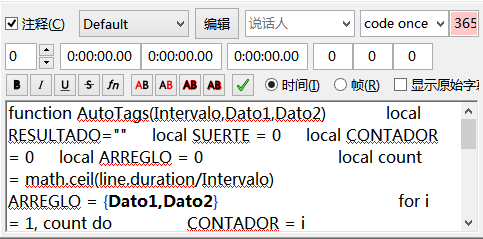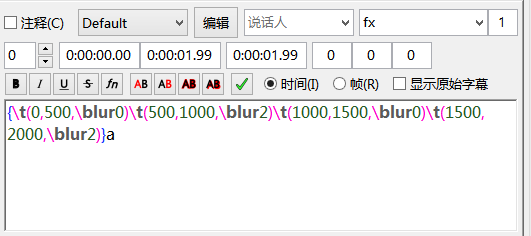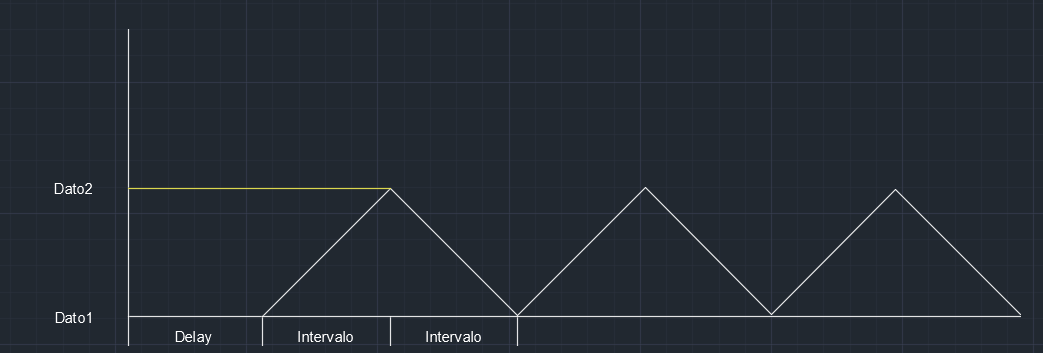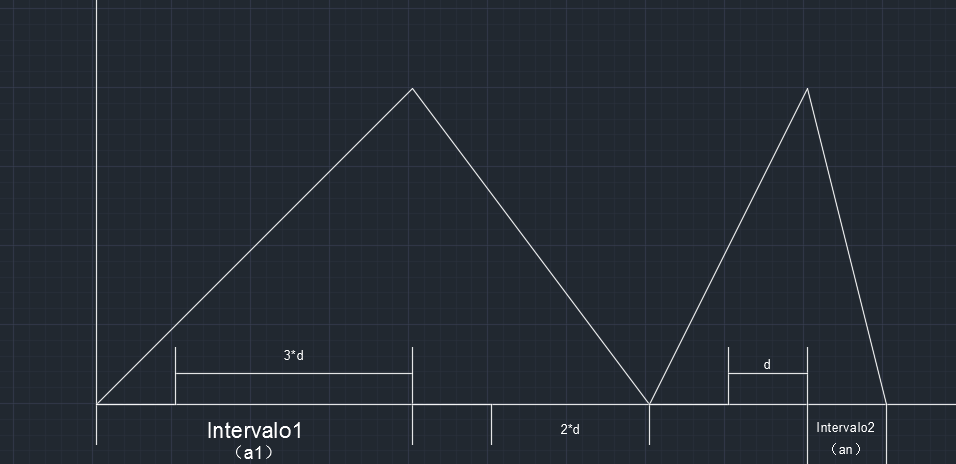The AutoTags function is used to cycle two (Group) special effect tags within the duration period, such as the blur value changes back and forth, resulting in a flicker effect. It is common in many scripts. To use this function, you first need to declare the function on the code line.
What's inside Aegisub
function AutoTags(Intervalo,Dato1,Dato2) local RESULTADO="" local SUERTE = 0 local CONTADOR = 0 local ARREGLO = 0 local count = math.ceil(line.duration/Intervalo) ARREGLO = {Dato1,Dato2} for i = 1, count do CONTADOR = i if Dato1 and Dato2 then if CONTADOR%2 ==0 then SUERTE = ARREGLO[1] else SUERTE = ARREGLO[2] end end RESULTADO = RESULTADO .."\\t(" ..(i-1)*Intervalo.. "," ..i*Intervalo.. ",\\" ..SUERTE..")".."" end return RESULTADO end
In order to understand the code easily, paste the newline writing method. For Aegisub's actual use, please copy the code without newline above. The same is true for subsequent parts:
function AutoTags(Intervalo,Dato1,Dato2)
local RESULTADO=""
local SUERTE = 0
local CONTADOR = 0
local ARREGLO = 0
local count = math.ceil(line.duration/Intervalo) ARREGLO = {Dato1,Dato2}
for i = 1, count do
CONTADOR = i
if Dato1 and Dato2 then
if CONTADOR%2 ==0 then
SUERTE = ARREGLO[1]
else
SUERTE = ARREGLO[2]
end
end
RESULTADO = RESULTADO .."\\t(" ..(i-1)*Intervalo.. "," ..i*Intervalo.. ",\\" ..SUERTE..")"..""
end
return RESULTADO
end
 Call again in template
Call again in template
Usage of AutoTags function in original form:
Autotags (when changing, "tag 1", "tag 2") (Figure 2)

The generated effect is shown in Figure 3

It can be observed that a reciprocating change of blur2 - > blur0 - > blur2 is generated throughout the duration of the word
If you want to use the reciprocating change between two groups of tags, note that you should use an additional \, such as AutoTags(500, "Blue2 \ FS50", "Blue0 \ fs30")
The original form of AutoTags is introduced here.
The following describes several variants generated by different requirements [AutoTags]
Variant 1
function AutoTags1(Intervalo,Dato1,Dato2,Pause) local RESULTADO="" local SUERTE = 0 local CONTADOR = 0 local ARREGLO = 0 local count = math.ceil(line.duration/(Intervalo+Pause)) ARREGLO = {Dato1,Dato2} for i = 1, count do CONTADOR = i if Dato1 and Dato2 then if CONTADOR%2 ==0 then SUERTE = ARREGLO[1] else SUERTE = ARREGLO[2] end end RESULTADO = RESULTADO .."\\t(" ..(i-1)*(Intervalo+Pause).. "," ..i*Intervalo+Pause*(i-1).. ",\\" ..SUERTE..")".."" end return RESULTADO end
Line feed:
function AutoTags1(Intervalo,Dato1,Dato2,Pause)
local RESULTADO=""
local SUERTE = 0
local CONTADOR = 0
local ARREGLO = 0
local count = math.ceil(line.duration/(Intervalo+Pause))
ARREGLO = {Dato1,Dato2}
for i = 1, count do
CONTADOR = i
if Dato1 and Dato2 then
if CONTADOR%2 ==0 then
SUERTE = ARREGLO[1]
else
SUERTE = ARREGLO[2]
end
end
RESULTADO = RESULTADO .."\\t(" ..(i-1)*(Intervalo+Pause).. "," ..i*Intervalo+Pause*(i-1).. ",\\" ..SUERTE..")"..""
end
return RESULTADO
end

It is used to realize the reciprocating change effect with pause time
The fourth parameter Pause is Pause time (ms)
Autotags1 (change time, "tag 1", "tag 2", pause time)
Variant 2
function AutoTags2(Intervalo,Dato1,Dato2,Delay) local RESULTADO="" local SUERTE = 0 local CONTADOR = 0 local ARREGLO = Layer local count = math.ceil(line.duration/Intervalo) ARREGLO = {Dato1,Dato2} for i = 1, count do CONTADOR = i if Dato1 and Dato2 then if CONTADOR%2 ==0 then SUERTE = ARREGLO[1] else SUERTE = ARREGLO[2] end end RESULTADO = RESULTADO .."\\t(" ..(i-1)*Intervalo+Delay.. "," ..i*Intervalo+Delay.. ",\\" ..SUERTE.. ")".."" end return RESULTADO end
Line feed:
function AutoTags2(Intervalo,Dato1,Dato2,Delay)
local RESULTADO=""
local SUERTE = 0
local CONTADOR = 0
local ARREGLO = Layer
local count = math.ceil(line.duration/Intervalo) ARREGLO = {Dato1,Dato2}
for i = 1, count do
CONTADOR = i
if Dato1 and Dato2 then
if CONTADOR%2 ==0 then SUERTE = ARREGLO[1]
else SUERTE = ARREGLO[2]
end
end
RESULTADO = RESULTADO .."\\t(" ..(i-1)*Intervalo+Delay.. "," ..i*Intervalo+Delay.. ",\\" ..SUERTE.. ")"..""
end
return RESULTADO
end
It is used to realize the reciprocating change effect with delay (delay relative to the line start time)

For example, you need to start 1s from the line before you need to change the effect:
AutoTags2(500, "tag 1", "tag 2", 1000)
Variant 3
function AutoTags3(Intervalo1,Intervalo2,Dato1,Dato2) local RESULTADO="" local SUERTE = 0 local CONTADOR = 0 local ARREGLO = 0 local count = 2*math.ceil(line.duration/(Intervalo1+Intervalo2)) local d=math.ceil((Intervalo2-Intervalo1)/count) local t={} ARREGLO = {Dato1,Dato2} for i = 1, count do CONTADOR = i t[1]=0 t[i+1]=t[i]+Intervalo1+(i-1)*d if Dato1 and Dato2 then if CONTADOR%2 ==0 then SUERTE = ARREGLO[1] else SUERTE = ARREGLO[2] end end RESULTADO = RESULTADO .."\\t(" ..t[i].. "," ..t[i+1].. ",\\" ..SUERTE..")".."" end return RESULTADO end
Line feed:
function AutoTags3(Intervalo1,Intervalo2,Dato1,Dato2)
local RESULTADO=""
local SUERTE = 0
local CONTADOR = 0
local ARREGLO = 0
local count = 2*math.ceil(line.duration/(Intervalo1+Intervalo2)) local d=math.ceil((Intervalo2-Intervalo1)/count)
local t={}
ARREGLO = {Dato1,Dato2}
for i = 1, count do
CONTADOR = i
t[1]=0
t[i+1]=t[i]+Intervalo1+(i-1)*d
if Dato1 and Dato2 then
if CONTADOR%2 ==0 then SUERTE = ARREGLO[1]
else SUERTE = ARREGLO[2] end
end
RESULTADO = RESULTADO .."\\t(" ..t[i].. "," ..t[i+1].. ",\\" ..SUERTE..")"..""
end
return RESULTADO
end
Arithmetical autotags (increase or decrease in change time)

The decrement effect is similar to the bomb timer, which is getting faster and faster
The increasing effect means that the change speed is getting slower and slower
Autotags3 (for the first change, for the final change, "tag 1", "tag 2")
The time for the first change > the time for the final change is decreasing
Final change time > first change time, which is incremental
The ASS file is attached
AutoTags.zip
github backup:
AutoTags.rar
For the time being, it's a good idea to think of such a few, equal ratio series, and two groups of time alternating changes. Welcome to add
The first post of the new year, I wish you a happy New Year